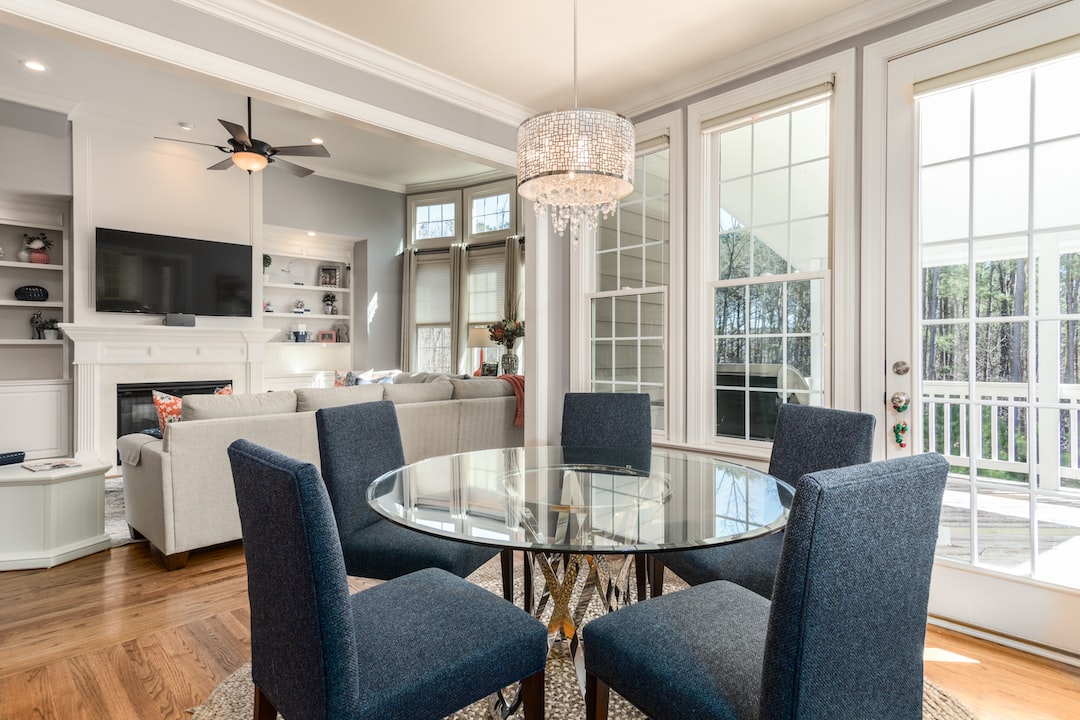Knowing the basics of home repair is an essential skill for every homeowner. Whether you live in a brand new house or an older one, there will inevitably be repairs and maintenance tasks that need to be done. By learning how to handle these tasks yourself, you can save both time and money. Additionally, having a basic understanding of home repairs can increase the value of your home and give you a sense of pride in being able to take care of your own property.
One of the main reasons why homeowners should know the basics of home repair is to save money. Hiring a professional for every little repair can quickly add up and become expensive. By learning how to handle simple repairs yourself, you can avoid these costs and put that money towards other things. Additionally, knowing how to fix things around the house can save you time. Instead of waiting for a professional to come and fix a problem, you can take care of it yourself right away.
Another benefit of knowing basic home repairs is that it can increase the value of your home. When potential buyers see that a house has been well-maintained and that repairs have been taken care of, they are more likely to be interested in purchasing it. On the other hand, if a house is in disrepair and needs a lot of work, it can be a turn-off for buyers. By knowing how to handle basic repairs, you can keep your home in good condition and maintain its value.
Essential Tools for DIY Home Repair: What You Need in Your Toolbox
Having the right tools is essential for any DIY home repair project. Here are some of the basic tools that every homeowner should have in their toolbox:
– Hammer: A hammer is one of the most basic tools that you will need for various tasks around the house, such as driving nails or removing them.
– Screwdrivers: Having a set of screwdrivers with different sizes and types of heads is essential for tasks like tightening screws or assembling furniture.
– Pliers: Pliers are versatile tools that can be used for gripping, bending, and cutting wires or other materials.
– Wrenches: Wrenches are used for tightening or loosening nuts and bolts. It’s a good idea to have both adjustable wrenches and socket wrenches in your toolbox.
In addition to these basic hand tools, it’s also helpful to have some power tools. Power tools can make certain tasks much easier and faster. Some essential power tools include a drill, a circular saw, and a jigsaw. However, it’s important to remember that power tools can be dangerous if not used properly, so always follow safety guidelines and wear appropriate protective gear.
Safety Tips for DIY Home Repair: Protecting Yourself and Your Home
When it comes to DIY home repair, safety should always be a top priority. Here are some important safety tips to keep in mind:
– Proper clothing and gear: Wear appropriate clothing and protective gear, such as safety goggles, gloves, and closed-toe shoes. This will help protect you from injuries while working on projects.
– Electrical safety: Before working on any electrical repairs or installations, make sure to turn off the power at the circuit breaker. Use insulated tools when working with electricity and avoid touching exposed wires.
– Handling tools safely: Always use tools as intended and follow the manufacturer’s instructions. Keep your tools clean and in good condition to prevent accidents. When using power tools, make sure to use them on stable surfaces and keep your fingers away from moving parts.
It’s also important to know your limits and when to seek professional help. If a project seems too complex or dangerous for you to handle on your own, it’s best to call a professional. Don’t take unnecessary risks that could result in injury or further damage to your home.
Basic Plumbing Repairs: Fixing Leaks, Clogs, and Broken Pipes
Plumbing issues are common in many homes, but they can be easily fixed with some basic knowledge and tools. Here are some common plumbing problems and how to fix them:
– Identifying common plumbing issues: Some common plumbing issues include leaks, clogs, and broken pipes. Leaks can be identified by water stains or dripping sounds. Clogs can cause slow draining or complete blockage of sinks or toilets. Broken pipes may result in water damage or loss of water pressure.
– Fixing leaks and clogs: To fix a leak, start by turning off the water supply to the affected area. Then, use a wrench to tighten any loose connections or replace damaged parts. For clogs, try using a plunger or a drain snake to remove the blockage. If these methods don’t work, you may need to remove the trap or call a professional plumber.
– Replacing broken pipes: If you have a broken pipe, you will need to turn off the water supply and cut out the damaged section of pipe using a pipe cutter. Then, use pipe fittings and soldering equipment to connect the new section of pipe.
It’s important to note that if you are not comfortable working with plumbing or if the issue is more complex, it’s best to call a professional plumber. Plumbing repairs can be tricky and if not done correctly, they can cause further damage to your home.
Electrical Repairs: Troubleshooting and Fixing Common Issues
Electrical issues can be intimidating for many homeowners, but with some basic knowledge and caution, you can handle simple electrical repairs yourself. Here are some tips for troubleshooting and fixing common electrical problems:
– Identifying electrical issues: Common electrical issues include flickering lights, outlets not working, or circuit breakers tripping. These problems can be caused by loose connections, overloaded circuits, or faulty wiring.
– Troubleshooting and fixing common problems: Start by checking the circuit breaker to see if any breakers have tripped. If so, reset them and see if that resolves the issue. If not, check the affected outlet or light fixture for loose connections. Turn off the power at the circuit breaker before working on any electrical repairs. If you are unsure or uncomfortable with electrical work, it’s best to call a professional electrician.
– Replacing outlets and switches: If an outlet or switch is not working, you may need to replace it. Start by turning off the power at the circuit breaker. Then, remove the cover plate and unscrew the outlet or switch from the electrical box. Disconnect the wires and connect them to the new outlet or switch. Finally, screw the new outlet or switch back into place and replace the cover plate.
It’s important to remember that electrical work can be dangerous if not done correctly. If you are unsure or uncomfortable with electrical repairs, it’s best to call a professional electrician to ensure your safety and prevent further damage to your home.
Painting and Decorating Tips: Refreshing Your Home on a Budget
Painting and decorating can be a great way to refresh your home without breaking the bank. Here are some tips for painting and decorating on a budget:
– Choosing the right paint and supplies: When choosing paint, opt for high-quality paint that will last longer and provide better coverage. Look for sales or discounts at your local home improvement store to save money. In addition to paint, you will also need brushes, rollers, drop cloths, and painter’s tape.
– Preparing surfaces for painting: Before painting, make sure to clean and prep the surfaces properly. Remove any dirt or grease using a mild detergent and water. Fill in any holes or cracks with spackle and sand them smooth. Use painter’s tape to protect trim and other areas that you don’t want to paint.
– Decorating tips for a fresh look: In addition to painting, there are many other ways to refresh your home on a budget. Rearrange furniture to create a new layout or add new throw pillows and curtains for a pop of color. Hang artwork or mirrors to add visual interest to your walls. You can also update light fixtures or cabinet hardware for a quick and easy change.
Flooring Repairs: Fixing Damaged Tiles, Hardwood, and Carpeting
Flooring repairs are another common issue that homeowners may encounter. Here are some tips for fixing damaged tiles, hardwood, and carpeting:
– Identifying flooring issues: Common flooring issues include cracked or chipped tiles, scratches or dents in hardwood floors, and stains or tears in carpeting.
– Repairing damaged tiles and hardwood: To repair damaged tiles, start by removing the grout around the affected tile using a grout saw. Then, use a chisel and hammer to carefully remove the tile. Clean the area and apply new adhesive before installing the new tile. For hardwood floors, you can use wood filler to fill in scratches or dents. Sand the area smooth and apply a matching stain or finish.
– Replacing carpeting: If you have stained or torn carpeting, you may need to replace it. Start by removing the old carpet and padding. Clean the subfloor and install new padding. Then, lay the new carpet and stretch it tightly using a knee kicker or power stretcher. Trim any excess carpet and secure it with tack strips.
It’s important to note that flooring repairs can be time-consuming and require some skill. If you are not comfortable with these repairs or if the damage is extensive, it’s best to call a professional flooring contractor.
Roofing Repairs: Fixing Leaks and Damage to Your Home’s Roof
Roofing issues can cause significant damage to your home if not addressed promptly. Here are some tips for fixing leaks and damage to your home’s roof:
– Identifying roofing issues: Common roofing issues include leaks, missing or damaged shingles, and sagging or clogged gutters. Leaks can be identified by water stains on the ceiling or walls. Missing or damaged shingles can be seen from the ground or by inspecting the roof up close.
– Fixing leaks and damage: To fix a leak, start by locating the source of the leak. This may require climbing onto the roof or inspecting the attic. Once you have identified the source, you can patch it using roofing cement or replace damaged shingles. For missing or damaged shingles, remove the old shingle and replace it with a new one. Make sure to secure it properly with roofing nails.
– Replacing shingles: If you have multiple damaged or missing shingles, you may need to replace an entire section of the roof. This can be a more complex task and may require the help of a professional roofer.
It’s important to prioritize safety when working on your roof. Use caution when climbing ladders and walking on the roof, and always wear appropriate safety gear. If you are uncomfortable with heights or if the repairs are extensive, it’s best to call a professional roofer.
DIY Home Improvement Projects: Adding Value and Functionality to Your Home
In addition to basic repairs, there are many DIY home improvement projects that can add value and functionality to your home. Here are some ideas:
– Adding storage space: Install shelves, cabinets, or built-in storage units to maximize space and keep your home organized.
– Updating fixtures and appliances: Replace outdated fixtures, such as faucets and light fixtures, with more modern ones. Upgrade old appliances with energy-efficient models.
– Landscaping and outdoor projects: Improve your home’s curb appeal by landscaping your yard, adding a patio or deck, or installing outdoor lighting.
These DIY projects can not only improve the functionality and aesthetics of your home but also increase its value. However, it’s important to remember that some projects may require permits or professional assistance. Always do your research and consult with experts if needed.
When to Call a Professional: Knowing Your Limits and When to Seek Help
While it’s great to be able to handle basic repairs and DIY projects, it’s important to know your limits and when to call a professional. Here are some signs that a project may be too big for you to handle:
– Lack of knowledge or experience: If you don’t have the necessary knowledge or experience to complete a project safely and effectively, it’s best to call a professional.
– Safety concerns: If a project involves working with electricity, gas lines, or other potentially dangerous elements, it’s best to leave it to the professionals who have the proper training and equipment.
– Complexity or scale of the project: Some projects may simply be too complex or time-consuming for a homeowner to handle on their own. If a project requires specialized tools or skills that you don’t possess, it’s best to call in the experts.
When hiring a professional, it’s important to do your research and find a reputable contractor. Ask for recommendations from friends or family, read reviews online, and get multiple quotes before making a decision.
Conclusion:
Knowing the basics of DIY home repair is essential for every homeowner. It can save you money and time, increase the value of your home, and give you a sense of pride in being able to take care of your own property. By having the right tools and following safety guidelines, you can handle basic repairs such as plumbing issues, electrical problems, flooring repairs, and more. Additionally, there are many DIY home improvement projects that can add value and functionality to your home. However, it’s important to know your limits and when to call a professional. Always prioritize safety and seek help when needed.
If you’re looking for some creative ideas to make your small kitchen feel bigger, check out this article on 5 Creative Ideas to Make Your Small Kitchen Feel Bigger. It offers practical tips and tricks to maximize space and create a more functional and spacious kitchen area. From clever storage solutions to strategic lighting techniques, this article has everything you need to transform your small kitchen into a stylish and efficient space.





